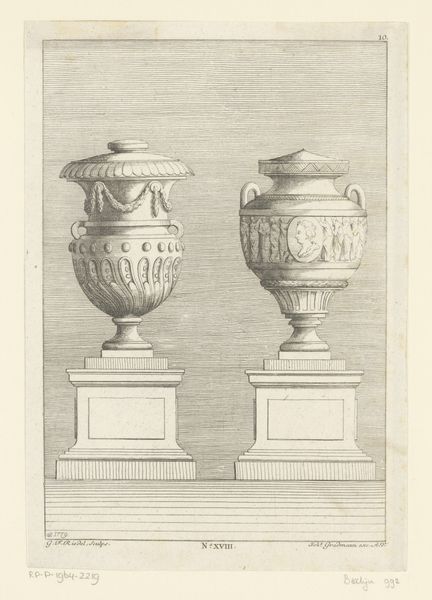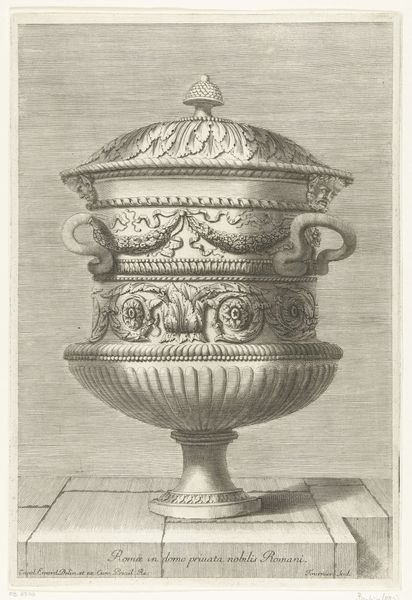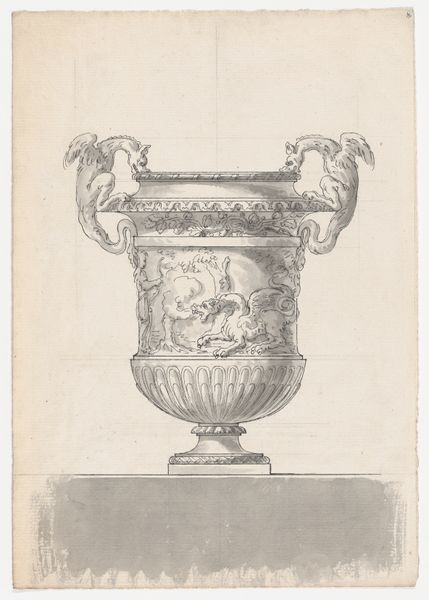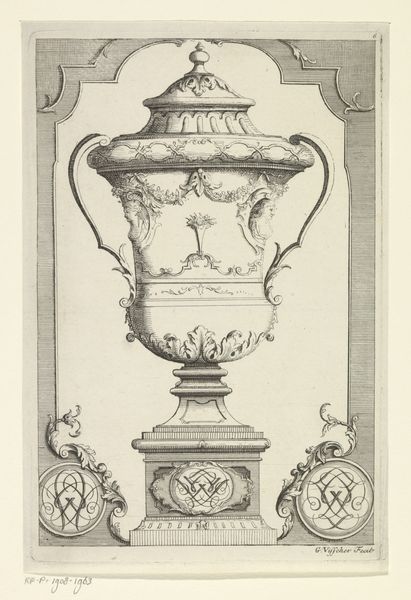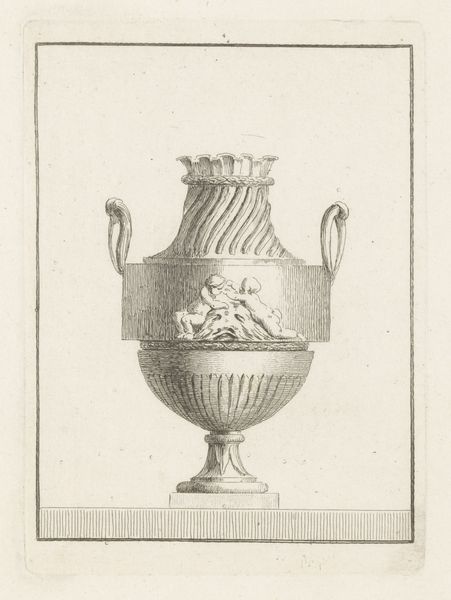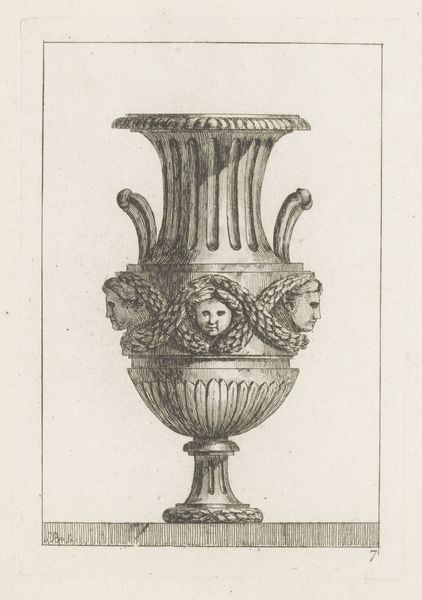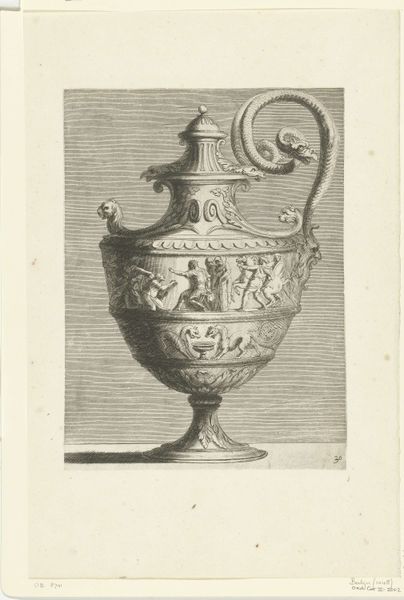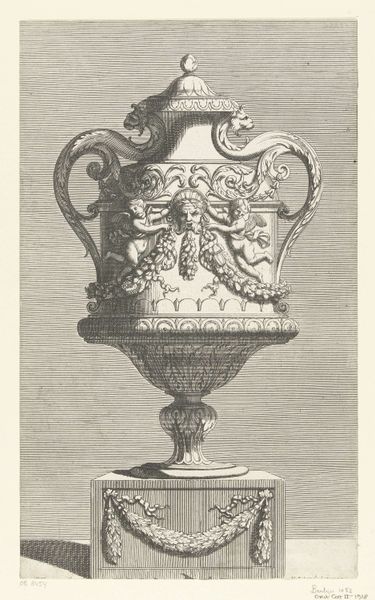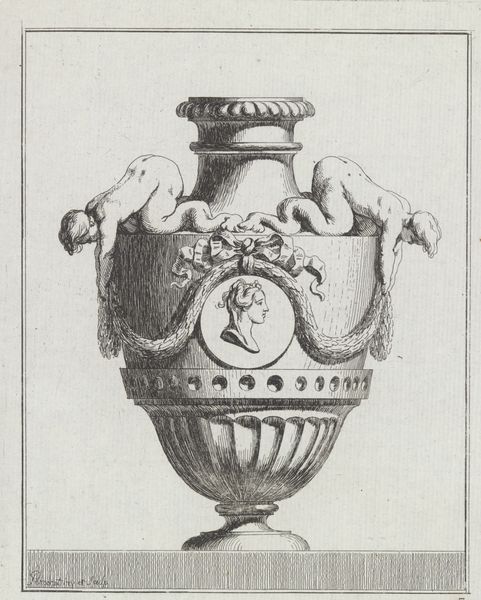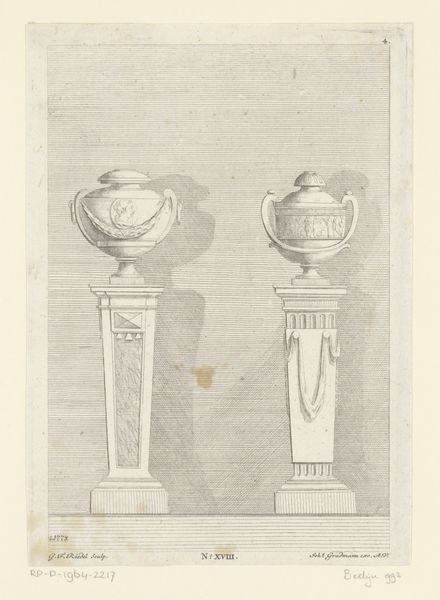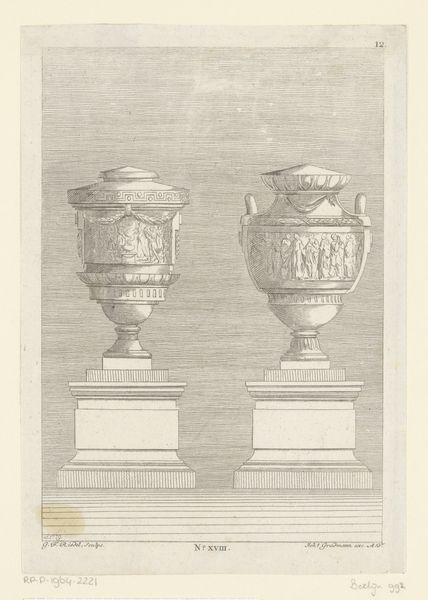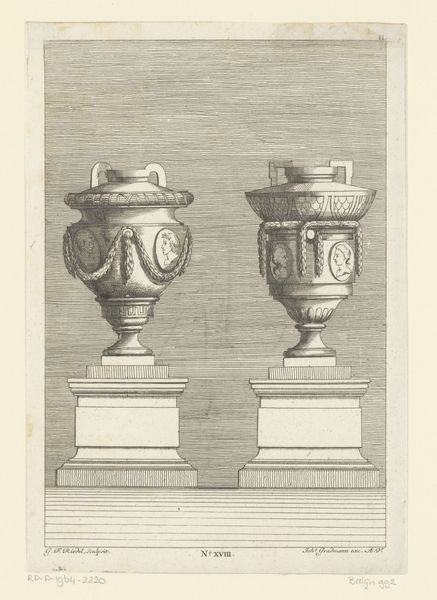
Dimensions: height 228 mm, width 157 mm
Copyright: Rijks Museum: Open Domain
Curator: This is “Two Urns on Pedestals,” an engraving made around 1779 by Gottlieb Friedrich Riedel. It's currently held in the Rijksmuseum collection. Editor: It’s quite striking how minimal it is, a study in elegant form. The urns feel static and a bit austere, even with the decorative elements. Curator: Indeed, let’s consider that 'form' isn't simply visual, but tied to production. This was likely part of a larger series, perhaps disseminated for artisanal reproduction—models for metalworkers or ceramicists to imitate, expanding Neoclassical design. Editor: The engraver's hand is so apparent. Note the meticulous cross-hatching that builds volume. It’s about lines, about the relationship between these almost identical yet distinct shapes. Look how the play of light defines the curvature and detail. Curator: Precisely! This was a period heavily influenced by the rediscovery of classical forms. These urns, set on pedestals, evoke ancient ideals—order, balance, perhaps commissioned for decorative use within elite households emulating classical taste and culture. Editor: You can almost trace the visual influence on subsequent decorative movements—an emphasis on restrained ornamentation, on simplified elegance, moving toward Empire styles, perhaps. The line quality in rendering garlands feels deliberate. Curator: And think of the social function of decorative arts, then: signifiers of class, indications of wealth. How many laborers toiled to reproduce these designs in metal or clay, contributing to this circulation of refined taste? Editor: I hadn’t thought of it that way, focusing primarily on its aesthetic achievement within the context of graphic techniques of the period. Curator: Well, that's the richness of these objects; both aspects reveal deeper truths about their creation, design, and role in their own period. Editor: Thanks; this has made me appreciate the engraving's context in terms of production and class distinction. Curator: And for me, thinking on line and volume lets us see how historical techniques shaped consumption.
Comments
No comments
Be the first to comment and join the conversation on the ultimate creative platform.
